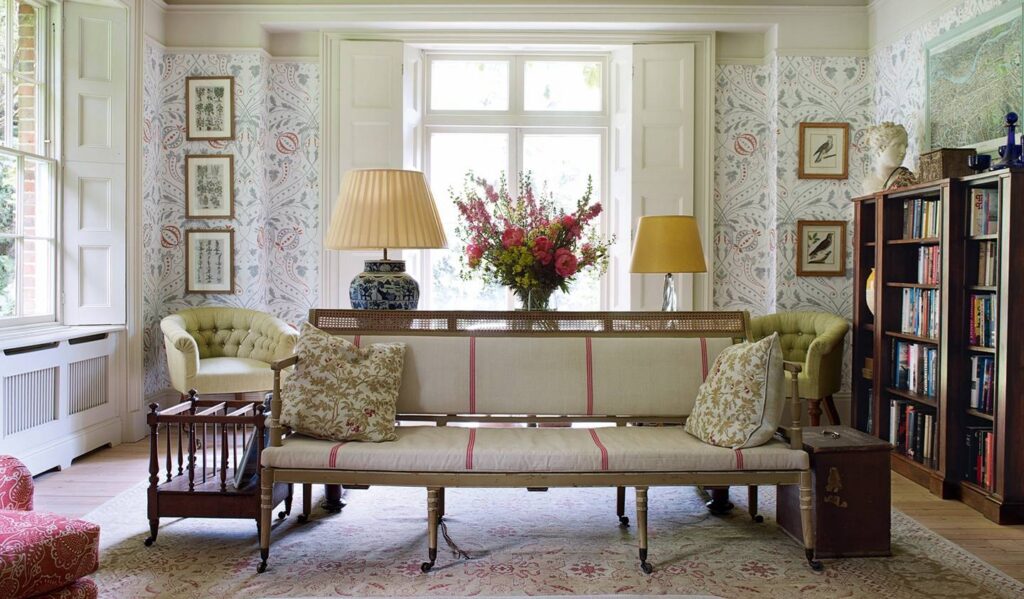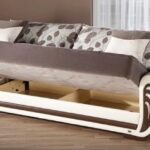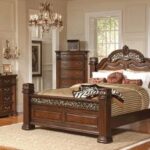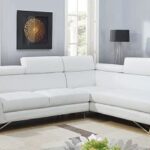A handsome vicarage
A handsome vicarage with elegantly layered interiors by Max Rollitt
A handsome vicarage

Ascending the property ladder is, for most of us, the work of half a lifetime, starting with posters on rented walls, progressing through trips to Ikea to more sophisticated levels of accumulation, and ultimately perhaps engaging an architect or interior decorator. It is more unusual to whizz from a rung near the bottom to one at the top in a single gravity-defying leap.
The owners of this handsome Hampshire vicarage with its elegantly layered interiors its intriguing pictures, impeccable antique furniture, its wit and design wisdom – moved in just over four years ago from a rented cottage, bringing with them one chair, two beds, a small kitchen table, and a couple of sofas. Lacking in possessions but not short on vision, they knew a good house when they saw it, and then promptly found the ideal man to fill and decorate it for them – antiques dealer Max Rollitt.
‘We came upon the vicarage almost by chance,’ the owner explains. ‘We were looking for something smaller and more rural, but even though it was not quite what we had in mind, I stepped through the door and it felt like home. When my husband came to see it, he ran around shouting, “This is fantastic.” So much for keeping cool and negotiating. As for Max, we already knew about him as we had often stopped and admired his shop in Winchester, which was always full of beautiful and exciting pieces. We went to see him about a sofa, and ended up hiring him as our interior decorator as we were so impressed and had realised by that point that we had taken on a huge project.’
This was the beginning of a new career for Max Rollitt. He still has a shop full of beautiful things, now in Alresford, but more interior-design work has followed, and the dual role of dealer-decorator has proved to suit him extremely well. As you sit in the pretty morning room of his first commission, with its confident, comfortable mix of colour and pattern, its antique rug on sanded floorboards, its patchwork of pictures, its sociable gathering of sofas and armchairs, its big cushions and interesting objects, it is hard to believe that these are things that were gathered and arranged in the space of days and months.
‘It’s the beauty of having a shop,’ Max comments. ‘It means I can try things out and source particular items if I feel a room needs them. I also produce a small range of bespoke furniture – chairs, sofas and dining tables – and have a collection of linens for furnishing. I trained as a cabinetmaker and my first job was working with a superb furniture restorer, so I recognise a good tradesman when I find one. But in the end, making a room work is a matter of composition, and getting the balance and the textures right.’
The house is a delightful amalgam of architectural styles and periods, probably dating back to the seventeenth century and with later additions. Behind its Dutch-gabled brick façade are three formal reception rooms with tall, Georgian sash windows on either side of a wide hall. But behind the dining room and beyond the kitchen, which overlooks a court yard on the left-hand side of the house, there are smaller rooms, once the domain of the servants and now used as an informal sitting room, a cloakroom and boot room, an office and a utility room.
The house already had plenty of period charm but Max has added more, replacing missing chimneypieces, installing a corner cupboard here, a butler’s sink there, and using the broad pine planks of drying shelves from Victorian potteries for flooring in the kitchen and other back rooms.
When it came to furnishing the rooms, the brief was for what the owner describes as ‘Eng lish shabby chic, like a house I used to visit as a child that was stuffed with interesting objects, pictures and books. You felt you might look in a cupboard and find a strange land on the other side. I had lots of images from magazines that reminded me of this house and Max took them and interpreted what we wanted wonderfully and unexpectedly, and encouraged us to be so much bolder and more broad-minded than we would have been. There are all kinds of funny touches, such as the collections of shells and birds’ eggs, the miniature painted animals peeping over the top of the kitchen cupboard, and the imposing bust in the dining room, with a top hat set at a jaunty angle on her head. These are the details that make the house feel not just decorated, but lived in and loved.’
There are also some magnificent pieces of antique furniture, including a late-eighteenth century breakfront, glazed bookcase that almost fills one wall of the drawing room, and, at the foot of the four-poster bed in the main bedroom, an unusual George I, chair-back walnut settee. There are even a couple of rather grand pieces in the kitchen, including a fine old Knole sofa piled with cushions covered in threadbare antique needlework, while informal and amusing pieces enliven many of the rooms, from a fragment of painted scenery in a bathroom, to a homely knitted cushion on a wing chair in the drawing room. In the same room, on a side table in front of a glamorous Regency Gothick mirror, are two carved wooden fish. ‘Reproduction junk,’ laughs Max. But they look good there don’t they?’ Like a fine cocktail or a delicious salad, it’s the balance of ingredients that makes the mix.




